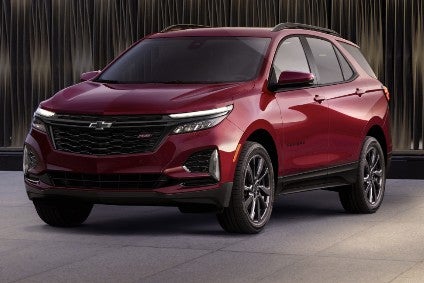
To appreciate US light vehicle sales in the third quarter, it’s more important to compare them to the results in the second quarter of this year than the third quarter of 2019.
Automakers delivered 3.9m cars and light trucks in the July-September period, down 8.9% from the same period last year. Year-to-date (YTD) totals as of 30 September were nearly 10.4m, a deficit of 19.1% compared to the more than 12.3m for the first nine months of 2019.
However, compared to a dismal, COVID-19-constrained second quarter, Q3 sales soared. Third quarter turnover was 32.2% higher than the previous quarter. Even with an extra selling day in Q3 the daily sales rate (DSR) was 30.5% ahead of Q2.
Manufacturers reported improved results for nearly 80% of models on offer in both quarters, ranging from a nearly 600% gain for the Ram ProMaster City small commercial van to a more modest 0.1% posted by the Toyota 4Runner. The average sales growth among the quarter’s winners was 50.4%.
It’s not surprising that the largest piece of the third quarter sales pie went to the utility segment. Crossovers and SUVs claimed 50.6% of total deliveries in the quarter and owned 48% of the market for the first nine months of 2020.
Toyota was the top utility brand in Q3 and held a commanding lead over second place Jeep in YTD deliveries. Ford was third after nine months but dropped behind both Chevrolet and Honda in Q3.

US Tariffs are shifting - will you react or anticipate?
Don’t let policy changes catch you off guard. Stay proactive with real-time data and expert analysis.
By GlobalDataToyota was also the top brand for passenger cars in both Q3 and YTD results although that’s not as critical for volume, any more. Market share for passenger cars fell again, ending the quarter at 23.8% of sales. So far in 2020, passenger cars account for less than a quarter of new vehicle deliveries.
Honda was second in both Q3 and YD car totals. Nissan is No. 3 for the year but Kia surpassed it in Q3.
Kia, Mazda, Mitsubishi, and Volvo all finished the third quarter in the back, trimming their YTD deficits.
While the ‘American’ automakers saw their share of passenger car deliveries rise by about 1% in Q3, it was all thanks to Tesla. The combined shares of FCA, Ford and General Motors dropped about 1.7 points to 17.1% of car sales as the Detroit companies race to exit the car business.
This hasty exit produced some interesting anomalies in Q3 passenger car results. Fiat brand autos outsold those from Buick. The Chevrolet Malibu was the best selling American branded car but the No. 2 spot went to the Dodge Charger.
I put ‘American’ in such marks for the simple reason that FCA for all intents and purposes is an American car company – at least in North America. The combined sales of Alfa Romeo and Fiat made up just 1.2% of the company’s turnover in both Q3 and YTD results. FCA sold almost three times more Chrysler 300s in Q3 than its total Fiat brand deliveries.
In the all important pickup segment, Ford rules the roost with the best selling models of full size trucks and the runner up in mid size models. The Toyota Tacoma is still the most popular mid size pickup but the Ranger surpassed the Chevrolet Colorado in both Q3 and in total 2020 sales.
Ford, Chevrolet, GMC, and Ram own the pickup segment. The four brands accounted for 94.4% of all sales in the full size segment and the addition of the Jeep Gladiator brings their share of mid size truck sales to 53.0%. The Detroit share of the pickup segment added 5.3 points to produce a total of 86.1% of the segment.
Lexus zipped past BMW and Mercedes to take the lead in premium brand sales for the quarter but Mercedes still has an 8.1% lead over Lexus in YTD results. BMW finished third in Q3 and is currently trailing both brands in the whole year race.
Outside of the switch in the two top brands, the rest of the order stayed exactly the same, with Audi in fourth place; Acura in fifth; Cadillac in sixth and so on down to Alfa Romeo in the cellar.
Transaction prices continued to climb. Both Edmunds and Kelley Blue Book estimated average transaction prices in September were about US$39,000 (GBP29,980), 2.5% higher than they were a year ago. Edmunds also noted that down payments were larger in the third quarter. Those who can afford new vehicles are taking advantage of some aggressive deals and acquisition options.
This trend, along with the trend away from sedans and hatchbacks, has the potential to cause problems in the future. Small, moderately equipped cars have traditionally served as the entry level for younger buyers shopping for a new vehicle. Given fairly plentiful lease returns and sales of used vehicles from daily rental fleets, these buyers may be difficult to attract to new vehicles down the line.
This could be a significant challenge for governments and automakers looking to get drivers out of petrol or diesel powered vehicles into EVs, whether battery or fuel cell powered. Simply buying used can avoid mandates such as the one issued by the state of California which applies only to new vehicles.
Predicting the fourth quarter in the US is especially challenging this year. The economy, the election, and the pandemic are all wild cards. Still, with more dealerships and factories open and running, some of the spot shortages of various models hopefully be addressed. About the most optimistic forecast is that the US shouldn’t see a repeat of the second quarter and that in itself is a plus.



